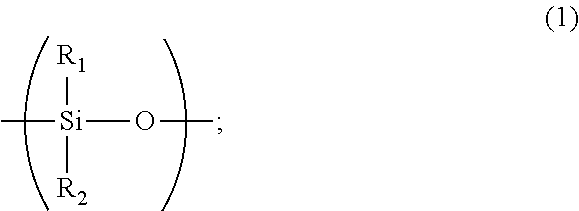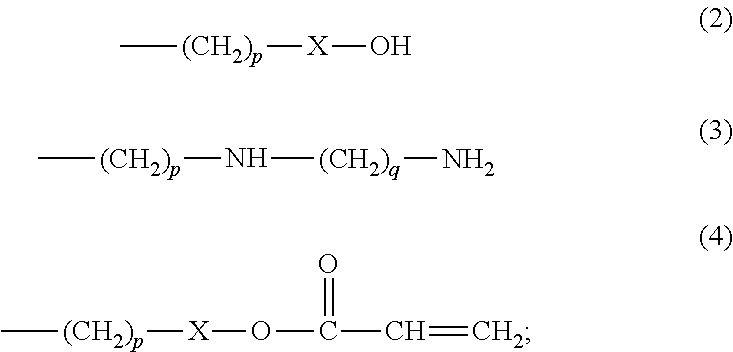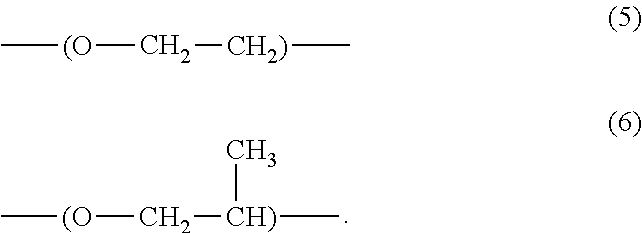Membrane for the Separation of a Mixture of a Polar Fluid and a Non-Polar Fluid and Methods for Use Thereof
a technology of polar fluid and membrane, applied in the field of membrane for the separation of a mixture of polar fluid and non-polar fluid, can solve the problems of reducing the useful life of compressors, and affecting the efficiency of compressors
- Summary
- Abstract
- Description
- Claims
- Application Information
AI Technical Summary
Benefits of technology
Problems solved by technology
Method used
Image
Examples
example 1
[0052]A disc-shaped film was formed by pouring a casting solution of 10:1 wt / wt ratio Silsurf J1015 and TDI into a 3.5 inch diameter ring. After allowing the hexane and cyclohexane to evaporate from the film while in a hood, the film was kept in a vacuum oven at 70° C. overnight for the film to form. It exhibited a 0.0447 cm thickness.
example 2
[0053]A disc-shaped film was similarly formed by pouring a casting solution of 10:1:0.5 wt / wt ratio Silsurf J1015, TDI, and Sylgard 184 (Sylgard 184 consists of part A (base) and part B (curing agent) at 10:1 ratio) into a 3.5 inch diameter ring. The film was kept in an 80° C. vacuum oven with an N2 purge overnight followed by maintaining the temperature in the oven at 100° C. for a half day for the film to form. It exhibited a 0.0603 cm thickness.
[0054]The permeance of N2, He, and CO2 through each film was measured. Table IV lists the permeances and variously calculated selectivities.
N2HeCO2α, He / α, CO2 / α, CO2 / Ex.(Barrers)(Barrers)(Barrers)N2N2He132.9805222.4315.896.53292.3174.92084.61.9022.6311.92
[0055]Based upon the film results in Table III, we concluded that each of the linear copolymers had too great of a polyether content and too low of a polysiloxane content. We believe that, for linear copolymers for use in the invention, a ratio of the number of ether repeating units to th...
PUM
| Property | Measurement | Unit |
|---|---|---|
| Polarity | aaaaa | aaaaa |
| Permeation properties | aaaaa | aaaaa |
Abstract
Description
Claims
Application Information
 Login to View More
Login to View More - R&D
- Intellectual Property
- Life Sciences
- Materials
- Tech Scout
- Unparalleled Data Quality
- Higher Quality Content
- 60% Fewer Hallucinations
Browse by: Latest US Patents, China's latest patents, Technical Efficacy Thesaurus, Application Domain, Technology Topic, Popular Technical Reports.
© 2025 PatSnap. All rights reserved.Legal|Privacy policy|Modern Slavery Act Transparency Statement|Sitemap|About US| Contact US: help@patsnap.com



